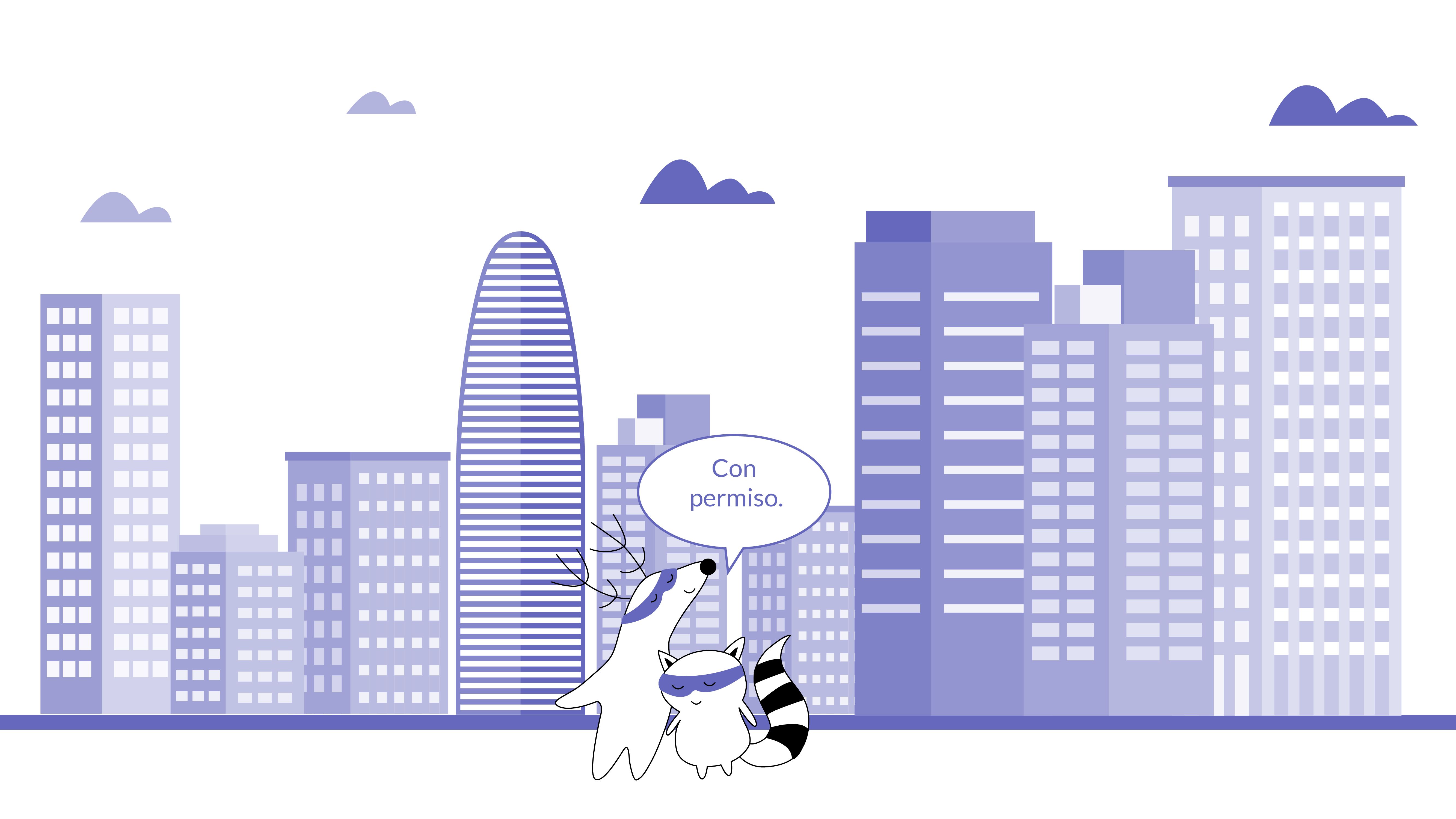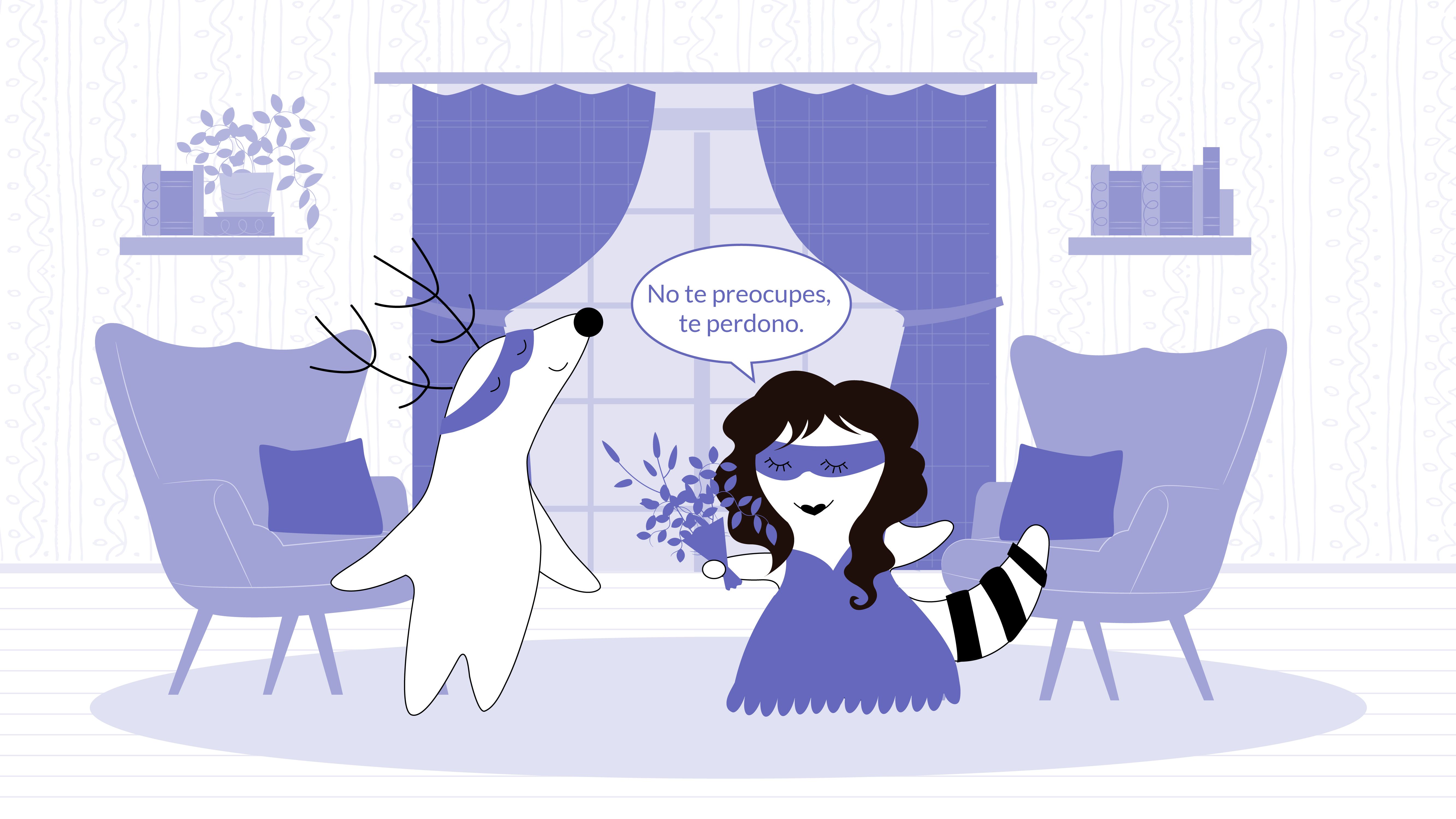
Learning a new language is a great way to broaden your horizons and connect with people from different cultures. However, learning a language isn't just about memorizing vocabulary and grammar rules; it's also about understanding cultural nuances and social interactions.
And, one important aspect of any language is how to apologize when you've made a mistake or hurt someone's feelings. So, whether you are a beginner or an advanced Spanish learner, let's dive into the world of apologies and learn how to say “sorry” in Spanish!
Learn Spanish with Langster
Different ways to say “I'm sorry” in Spanish
Perdón
Perdón is commonly used to apologize for something that you have done wrong, particularly minor mistakes or accidents.
For example, if you accidentally bump into someone on the street, you might say Perdón to apologize for your mistake. Pedir perdón is a simple way to acknowledge that you made a mistake and you're sorry for it.
Spanish
English
Perdón por pisar tu pie accidentalmente.
Sorry for accidentally stepping on your foot.
Lo Siento Mucho
Lo siento mucho has the same meaning but is a more formal and sincere apology that is used for more significant mistakes or offenses.
For example, if you accidentally break someone's favorite vase, you might say Lo siento mucho to sincerely apologize for your mistake. The phrase carries a deeper sense of regret and remorse, and it's a way to express that you understand the gravity of your mistake and are truly sorry for it.
Spanish
English
Lo siento mucho por haber llegado tarde a la reunión.
I'm very sorry for being late to the meeting.
Perdone (Formal)
If you want to apologize formally to someone, you might use the phrase Perdone. This phrase is the formal version of disculpa and is used when addressing someone in a position of authority or someone you don't know very well.
You would use perdone when accidentally spilling coffee on someone's expensive suit, as this phrase is respectful and acknowledges that you recognize the person's position or authority.
Spanish
English
Perdone, no quise derramar el café.
I'm sorry, I never meant to spill the coffee.
Lo Lamento
While Lo lamento may be used by Spanish speakers to apologize for something they've done wrong, it's most commonly used to express regret or sorrow for something that has happened.
For example, if you hear that someone's pet has passed away, you might say lo lamento to express your condolences. The phrase isn't necessarily an apology, but it is a way to express sympathy and comfort someone going through a difficult time.
Spanish
English
Lo lamento mucho por la pérdida de tu abuela, mi más sentido pésame.
I'm very sorry for the loss of your grandmother, my deepest condolences.
How to Say “Excuse Me” in Spanish
"Excuse me" is a phrase that has different uses in the Spanish language, depending on the context. The most common situations are:
- when you want to get someone's attention,
- apologize for interrupting someone,
- or ask for permission to pass through a crowded area.
The phrase "Excuse me" in Spanish is Con permiso or Disculpe. When using Con permiso or Disculpe to get someone's attention or apologize for interrupting, it's important to use the appropriate tone depending on the situation.

If you're in a formal setting, such as a business meeting or a conference, it's best to use the more formal Disculpe when addressing someone. For more casual settings, such as talking to friends or family, Con permiso is more appropriate.
Here are some practical examples:
- When walking through a crowded street, say Con permiso to politely ask people to move out of your way.
- When trying to get someone's attention, say Disculpe.
- When interrupting someone, say Disculpe followed by a brief explanation of why you're interrupting.
And, always remember to say gracias as a sign of appreciation and gratitude.
Spanish
English
¿Podría ayudarme, por favor?
Excuse me, could you please help me?
Disculpe, ¿podría decirme la hora?
Excuse me, could you tell me what time it is?
How to Give a More Heartfelt Apology in Spanish
Giving a heartfelt apology is essential to repairing relationships and showing empathy. In Spanish-speaking cultures, apologizing is about saying the right words and expressing genuine remorse and understanding.
If you want to give a more heartfelt apology in Spanish, you can say a few things to show that you truly mean it.

Here are some practical examples of giving a heartfelt apology in Spanish:
Spanish
English
Lo siento mucho por haberte lastimado. No debí haberte dicho eso.
I'm so sorry for hurting you. I shouldn't have said that.
Lo siento de todo corazón por lo que hice. ¿Hay algo que pueda hacer para arreglar las cosas?
I'm truly sorry for what I did. Is there anything I can do to make things right?
Perdóname por mi error, no volverá a pasar. Aprecio mucho tu paciencia y comprensión.
Forgive me for my mistake; it won't happen again. I appreciate your patience and understanding.
No Era mi Intención
The phrase No era mi intención translates to "It was not my intention." It is used when you want to apologize or provide an explanation for an innocent mistake or misunderstanding, emphasizing that you didn't mean any harm.
Using No era mi intención implies that your actions were unintentional and that you did not foresee the negative consequences. This phrase can be used both in casual conversations and professional settings.
Spanish
English
No era mi intención ofenderte con mis palabras.
It was not my intention to offend you with my words.
No era mi intención llegar tarde al evento.
It was not my intention to be late to the event.
No lo Volveré a Hacer
The phrase No lo volveré a hacer in Spanish means "I won't do it again." It's used to assure someone that you've learned from your mistake and will not repeat the same action in the future.
Examples in everyday conversation:
Spanish
English
No lo volveré a hacer, prometo ser puntual.
I won't do it again, I promise to be on time.
No lo volveré a hacer, no te preocupes.
I won't do it again, don't worry.
Ya Sabes Cuánto lo Siento
The phrase Ya sabes cuánto lo siento in Spanish translates to "You know how sorry I am." It's used to emphasize the sincerity of your apology and express deep regret for your actions.
Spanish
English
Ya sabes cuánto lo siento por haber olvidado tu cumpleaños.
You know how sorry I am for forgetting your birthday.
Ya sabes cuánto lo siento por no haber estado ahí cuando me necesitabas.
You know how sorry I am for not being there when you needed me.
Different Answers You Might Get after Apologizing
The response to an apology in Spanish-speaking cultures can vary depending on the context and the relationship between the people involved.
However, the important thing to remember is that apologizing is a crucial part of building relationships and showing empathy, and it's always worth making an effort to apologize if you've made a mistake.
No te Preocupes

This phrase means "don't worry" or "it's no big deal." It's a common response to minor mistakes or accidents, and it shows that the person doesn't hold any grudges and is willing to move past the situation.
Spanish
English
Perdona por olvidar devolverte el libro a tiempo.
I'm sorry I didn't return the book on time.
No te preocupes, sé que fue un descuido.
Don't worry, I know you just forgot.
No Pasa Nada
Similar to no te preocupes, this phrase is the Spanish equivalent to "it's nothing." It's another way of saying that the person doesn't hold any grudges and is willing to forgive and forget.
Spanish
English
Lamentablemente, no pude conseguir las entradas para el concierto.
Unfortunately, I couldn't get tickets for the concert.
No pasa nada, entiendo que no siempre es posible.
It's nothing, I understand that it's not always possible.
Está Bien
This phrase means "it's okay." By using this phrase, you show you understand that the other person made a mistake and that you're not upset about it.
Spanish
English
Siento haber interrumpido tu reunión. Fue un error de mi parte.
I'm sorry I interrupted your meeting, it was a mistake on my part.
Está bien, no te preocupes. Podemos retomar la reunión más tarde.
It's okay, don't worry. We can resume the meeting later.
Te Perdono
This phrase means "I forgive you." It's a more formal and serious response to an apology, and it shows that the person is willing to let go of any negative feelings towards you.
Spanish
English
Lo siento mucho por haber compartido información confidencial sin tu permiso.
I'm very sorry I shared your private data without permission.
Te perdono. Solo asegúrate de no repetirlo en el futuro.
I forgive you, just don't do it again in the future.
There are many cultural differences in Spanish-speaking countries that may play a role in what response you receive to apologies. For example, in some countries, such as Mexico and Colombia, people tend to be more forgiving and less confrontational.
They are more likely to respond with phrases like no te preocupes or no pasa nada to show that they don't hold grudges or make a big deal out of minor mistakes.
In other countries, such as Spain, there is more emphasis on formality and respect. In these cultures, people may respond with phrases like te perdono to show that they take apologies seriously and that forgiveness is a significant part of their values.
The Bottom Line

Learning how to apologize in Spanish is important for understanding social interactions and cultural nuances in the language. From perdón to lo siento mucho, knowing how to say "I'm sorry" in different contexts is crucial.
And, if you want to learn even more Spanish vocabulary and improve your language skills, you should consider using apps like Langster, where you'll learn new words and strengthen your communication abilities with entertaining stories!
Learn Spanish with Langster









